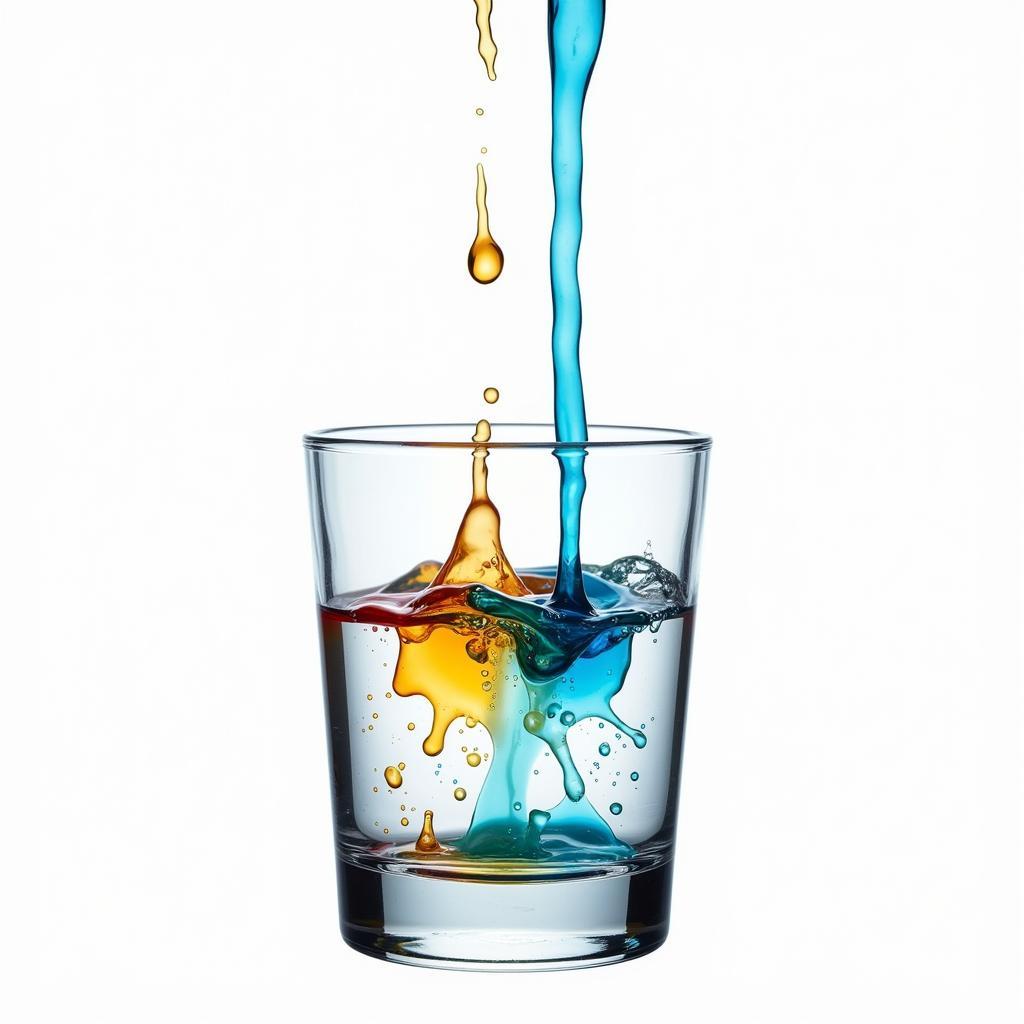Adding food coloring to water is a common practice, whether for scientific experiments, children’s activities, or even enhancing the visual appeal of food and drinks. But does this simple act represent a chemical change or merely a physical one? The answer, perhaps surprisingly, is that it’s generally considered a physical change.
Adding food coloring to water involves dissolving the colorant in the water. This process is primarily physical, as the water molecules become interspersed with the food coloring molecules. No new substance is formed; the water remains water, and the food coloring retains its chemical identity, although dispersed. You can separate the food coloring from the water through methods like evaporation, demonstrating that the chemical composition of both substances hasn’t been altered. You might be thinking of other scenarios involving color change where a chemical reaction occurs. However, in this specific case, the observed color change is simply due to the distribution of the colorant throughout the water.
After this introduction, let’s delve deeper into the differences between physical and chemical changes to further clarify why adding food coloring to water falls into the former category.
Understanding Physical vs. Chemical Changes
Understanding the distinction between physical and chemical changes is crucial for classifying the act of adding food coloring to water. A physical change alters the form or appearance of a substance without changing its chemical composition. Examples include melting ice, boiling water, or dissolving sugar in water. In contrast, a chemical change results in the formation of new substances with different properties. Burning wood, rusting iron, and baking a cake are examples of chemical changes.
Key Differences in a Nutshell
- Physical Change: Alters form, not composition. Reversible.
- Chemical Change: Creates new substances. Often irreversible.
Is dyeing fabric with food coloring a chemical or physical change? It’s a good question that leads us to further investigate the properties of food coloring. Check out more information on how to dye fabric with food coloring.
can food coloring be used to dye fabric
Why Food Coloring in Water Is a Physical Change
When food coloring is added to water, the colorant dissolves, meaning its molecules become evenly distributed throughout the water. This is a physical process, similar to dissolving sugar or salt. The water and the food coloring retain their individual chemical identities; they are simply mixed together. No new substance is created, and the process is easily reversible – the water could be evaporated, leaving the food coloring behind.
Evidence Supporting a Physical Change
Several observations support the classification of this process as a physical change:
- No new substance is formed: The water remains water, and the food coloring remains food coloring.
- Reversibility: The process can be reversed by evaporating the water.
- No significant energy change: The temperature change during the dissolving process is negligible.
 Food Coloring Dissolving in Water
Food Coloring Dissolving in Water
Does Food Coloring React with Anything?
While food coloring itself doesn’t typically react with water, it can react with other substances. For instance, certain food colorings can be sensitive to pH changes, resulting in a color shift. This is still considered a chemical reaction, as the food coloring molecule itself is undergoing a change, unlike in the simple mixing with water.
Food Coloring and Chemical Reactions
Food coloring can participate in chemical reactions, but these typically involve substances other than water. Examples include:
- Bleaching: Bleach can react with food coloring, causing the color to fade.
- Reactions with acids or bases: Certain food colorings can change color in acidic or basic solutions.
Even concrete can be stained with food coloring under the right circumstances. Wondering if food coloring stains concrete? Find out how food coloring interacts with concrete.
will food coloring stain concrete
“Understanding the nature of food coloring and its interaction with different substances is vital for predicting and controlling outcomes in various applications,” says Dr. Anya Sharma, a chemist specializing in colorant chemistry. “While adding food coloring to water is a straightforward physical process, the potential for chemical reactions exists when other substances are introduced.”
Conclusion
Adding food coloring to water is a physical change, not a chemical one. The process involves the dissolving of the colorant in the water, which is a physical process. No new substance is formed, and the process can be easily reversed. While food coloring can participate in chemical reactions with other substances, its interaction with water is simply a matter of mixing and distribution. Understanding this distinction helps clarify the nature of this common practice. Is Adding Food Coloring To Water A Chemical Change? The simple answer is no.
Want to learn about coloring pond water green? Learn how to do it safely.
FAQ
- What is the difference between a physical and chemical change? A physical change alters the form or appearance of a substance, while a chemical change creates new substances.
- Why is dissolving food coloring in water a physical change? Because no new substance is created, and the process can be reversed.
- Can food coloring react with anything? Yes, food coloring can react with substances like bleach and acids/bases.
- How does food coloring dissolve in water? The food coloring molecules become evenly distributed throughout the water molecules.
- What happens if I evaporate the water after adding food coloring? The food coloring will be left behind.
- Does the temperature change when food coloring is added to water? No, there’s no significant temperature change.
- Can I separate food coloring from water? Yes, through methods like evaporation.
Need Help with Color?
For all your color needs and inquiries, feel free to contact us.
Phone: 0373298888
Email: [email protected]
Address: 86 Cầu Giấy, Hà Nội
Our customer service team is available 24/7 to assist you.
